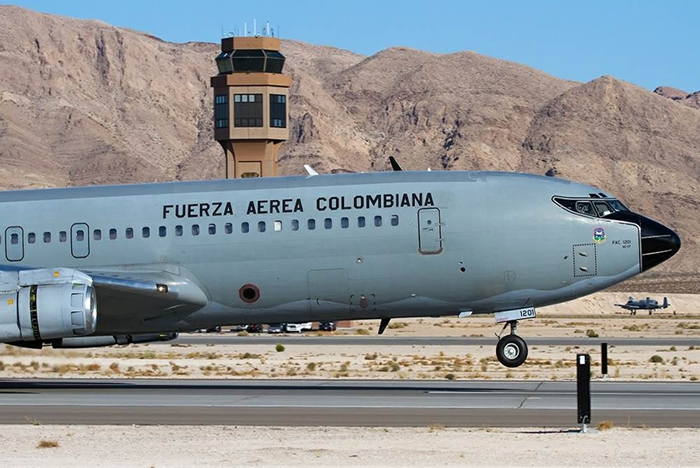ADS-B Technologies Use and Appropriation at CETAD
DOI:
https://doi.org/10.18667/cienciaypoderaereo.141Keywords:
Radar Signal Processing, Trajectory Forecasting, Tracking radarAbstract
Air transport has been growing over the last few years, and for this reason, maintaining the safety and improving navigation systems support is a constant challenge in congested airspace. An alternative that has been accepted worldwide because of its advantageous costs and benefits, involves the integration of satellite navigation systems with autonomous broadcasting systems on aircraft, which have allowed to extend situational awareness into areas without coverage of CNS/ATM systems, through an automatic dependent surveillance aircraft system called ADS-B network which allows flight profile sharing with nearby aircraft and ground stations indifferently. This system is being integrated with the monitoring and control systems of many countries, in response to the need of maintaining the air safety in increasingly trafficked airspaces, allowing better use of routes and decreasing operational costs of companies. The Colombian Air Force, through its Technological Development Center for Defense CETAD, is working on understanding and adapting this technology to utilize it in military operations.Downloads
References
Bian, B., and Moertl, P. M. (2012). Global positioning system accuracy under varying ionospheric conditions for surface Automatic Dependent Surveillance-Broadcast applications. In 12th Integrated Communications, Navigation and Surveillance Conference: Bridging CNS and ATM, ICNS 2012, pp. A31-A318.
https://doi.org/10.1109/ICNSurv.2012.6218374
Chiang, K. W., and Huang, Y. W. (January, 2008). An intelligent navigator for seamless INS/GPS integrated land vehicle navigation applications. Appl. Soft Comput., 8 (1), pp. 722-733.
https://doi.org/10.1016/j.asoc.2007.05.010
Flavio Vismari, L., and Camargo Junior, J. B. (July, 2011). A safety assessment methodology applied to CNS/ATM-based air traffic control system, Reliab. Eng. Syst. Saf., 96 (7), pp. 727-738.
https://doi.org/10.1016/j.ress.2011.02.007
Flavio Vismari L., and Camargo Junior, J. B. (July, 2011). A safety assessment methodology applied to CNS/ATM-based air traffic control system. Reliab. Eng. Syst. Saf., 96, (7), pp. 727-738
https://doi.org/10.1016/j.ress.2011.02.007
Frady, S. (WNC IEEE) (March, 2014). Applications for RTL based Software Defined Radios. [Online]. Available: http://sites.ieee.org/wnc/files/2014/04/IEEE_Frady_SDR_Mar_2014.pdf.
Harmonisation, E. A. T. C., and Programme, A. I., (August, 2002). Eurocontrol Standard Document For Part 2a Transmission of Monoradar Data Target Reports.
Harrison, M. J. (2006). ADS-X the Next Gen Approach for the Next Generation Air Transportation System. ieee/aiaa 25TH Digit. Avion. Syst. Conf.
https://doi.org/10.1109/DASC.2006.313678
International Civil Aviation Organization (ICAO). (2012). Manual on Airborne Surveillance Applications.
International Civil Aviation Organization (ICAO). (September, 2011). ADS-B Implementation And Operations Guidance Document.
Miquel, T.; Mora-Camino, F., and Loscos J. M. (2006). Path stretching and tracking for time-based aircraft spacing at meter fix. In Collection of Technical Papers - AIAA Guidance, Navigation, and Control Conference, 1, pp. 411-418.
https://doi.org/10.2514/6.2006-6064
Nolan, M. S. (1998). Fundamentals of Air Traffic Control. Third Edit.
Organización de los Sistemas de Sensores de Vigilancia (OACI). (1998). Manual sobre ensayo de sistemas del radar de vigilancia. Primera Ed.
Organización de Aviación Civil Internacional. (2006). Anexo 10. Telecomunicaciones aeronáutica.
O. R. S. OACI. (2013). Guía de Consideraciones Técnicas Operacionales para la Implantación del ADS-B en la región SAM.
Rees, M. (Head of CNS-EUROCONTROL) (2009). The Eurocontrol Surveillance Strategy. In ENRI International Workshop on ATM/CNS.
https://doi.org/10.1109/TIWDC.2008.4649017
Rushby, J. (1994). Critical System Properties, 43 (2), pp. 189-219.
https://doi.org/10.1016/0951-8320(94)90065-5
Schafer, M.; Strohmeier, M; Lenders, V.; Martinovic, I., and Wilhelm, M. (2014). Demonstration abstract: OpenSky A large-scale ADS-B sensor network for research. In IPSN-14 Proceedings of the 13th International Symposium on Information Processing in Sensor Networks, pp. 313-314.
https://doi.org/10.1109/IPSN.2014.6846779
Skolnik, M. I. (1990). Radar Handbook. Second Ed. McGraw-Hill.
Strohmeier, M.; Schafer, M.; Lenders, V., and Martinovic, I. (May, 2014). Realities and challenges of nextgen air traffic management: the case of ADS-B. IEEE Commun. Mag., 52 (5), pp. 111-118.
https://doi.org/10.1109/MCOM.2014.6815901
Tomlin, C. (1998). Hybrid Control of Air Traffic Management System [PhD Dissertation]. California University.
Yamamoto, K. (2014). Air Traffic Management and Systems, vol. 290, pp. 3-14. Tokyo: Springer Japan
https://doi.org/10.1007/978-4-431-54475-3_1
Zhang J., Liu, W., and Zhu, Y. (August, 2011). Study of ADS-B Data Evaluation. Chinese J. Aeronaut, 24 (4), pp. 461-466.

Downloads
Issue
Section
License
Assignment of Copyrights
Authors assign Ciencia y Poder Aéreo journal the exclusive rights (reproduction, distribution, public communication, and transformation) to exploit and commercialize their work, in whole or in part, in all the formats and modalities of present or future exploitation, in all languages, throughout the life of the work and throughout the world.
All contents published in Ciencia y Poder Aéreo journal are licensed under a Creative Commons Attribution 4.0 International License, whose complete information is available at http://creativecommons.org/licenses/by/4.0/
Under the terms of this license, users are free to download, print, extract, archive, distribute and publicly communicate the content of articles, provided that proper credit is granted to authors and Ciencia y Poder Aéreo, scientific journal of the Graduate School of the Colombian Air Force. Except when otherwise indicated, this site and its contents are licensed under a Creative Commons Attribution 4.0 International License.
For other uses not considered under this license it is required to contact the Director or the Editor of the journal at the e-mail address cienciaypoderaereo1@gmail.com.
The Graduate School of the Colombian Air Force and this publication are not responsible for the concepts expressed in the articles, including the metadata or the affiliation stated by authors. This is the full responsibility of the authors.





















